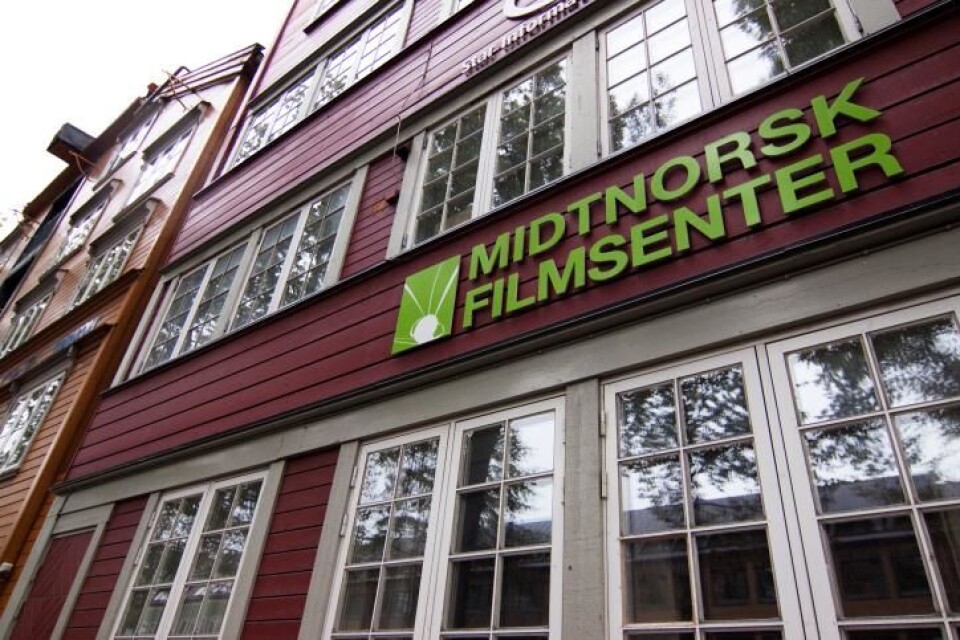
To Stimulate Growth
Of the 47 million kroner in increased funding for Norwegian films, Central Norwegian Films will not receive a crown more. The daily manager of the Mid-Norway Film Fund believes that the government has covertly introduced new criteria.
In the 2012 national budget the support for the Central Norwegian Film Center and the Central Norwegian Film Fund has been frozen. The government has increased the budget for film in the districts by 5.4 million crowns, but Mid-Norwegian Film will not receive a penny of the increase from the new budget.
“Most other regional film centers will be getting more than before. Of the funds which are earmarked for film in the districts, Mid-Norway will get nothing,” says the daily manager for the Mid-Norwegian Film Fund, Stig Bech.
No Less
This spring, Under Dusken wrote about how the criteria for dividing up funds from the government could be a death blow for Central Norwegian Films. Previously, the criteria for sharing support was based on discretion. Now, 60 percent is based on the size of the population, and the remaining 40 percent are based on considerations regarding “activity in the region.” This is measured by the amount of businesses.
At the same time, Norwegian film centers were critical of the governments suggestion for changing the criteria. Daily manager, Stein Bech, thinks that with the freezing of funds to mid-Norwegian film, the government’s suggested changes were introduced in a disguised manner.
“The state budget falls clearly in disfavor of mid-Norwegian film. The diminished financial support will negatively affect production,” says Bech.
Consequences of the Criteria
Acting daily manager Yrja Flem-Waage at the Central Norwegian Film Center is critical of distributing of funds for culture based on quantitative considerations.
”If they think that talent has anything to do with the number of registered businesses, they are wrong,” says Flem-Waage.
She points out that the Central Norwegian Film Center agrees that there should be criteria for distributing funds, but is critical of the suggestion at hand.
“There is no connection between the quality of film production and the number of registered businesses. It’s the wrong way to approach the appraising of cultural institutions, and it’s a shame that resources are distributed in this way,” she says.
She points out that the Central Norwegian Film Center is committed to contributing to constantly increasing quality and a robust film culture in the region.
Will not Receive Less
The new criteria contain clause stating that none of the film centers in the districts will receive reduced support. Bech believes that this is the reason that the Central Norwegian Film Center has kept its funding from the state budget.
“If this rule didn’t exist, Central Norwegian Film would receive, based on population size, less support than before,” says Bech.
Director, Dag Hoel works in conjunction with the Central Norwegian Film Center. He thinks it is unfortunate that the size of the population in Trøndelag is the most important factor.
“It’s something to do with how they evaluate our work, we simply have too few people in Trondheim,” says Hoel.
He thinks that it is more important for the film center to produce quality films than to be advantageously evaluated in the future.
“Now that we’re in the middle of establishing an environment for production, this is unfortunate, since we’re hanging behind other film centers. It’s important for filmmakers in central Norway to make good films in order for us to gain attention for future evaluations,” says Hoel.
“The numbers based on population size are weighted, so that a northerner counts four times as much as an easterner. This is to give a more even distribution to the districts,” says state secretary, Roger Solheim, in the Norwegian Culture Ministry.
The part of the evaluation which weighs activity in the district are based on numbers from the Central Statistics Bureau. In addition, activities in prioritized areas, such as work for equality or work with children, are weighted.
“The weighting takes the districts into consideration and has more than doubled the allocated funds, but at the same time, it’s important to have standardized criteria for distribution of funds,” says Solheim.
Solheim explains how the government has introduced these criteria to create a more predictable and even distribution of resources.
“The goal is to stimulate film production and to honor those who are actively creating,” says Solheim.

































